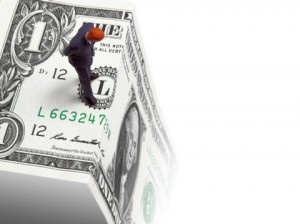Why QE3 will crash and burn
 Despite it twice failing to stimulate the economy, a desperate Obama administration is making a third attempt at saving his re-election by inflating our money.
Despite it twice failing to stimulate the economy, a desperate Obama administration is making a third attempt at saving his re-election by inflating our money.
Gerald P. O’Driscoll Jr. explains why, in this Wall Street Journal guest opinion from Aug. 30, 2012.
Quantitative easing is the Fed’s version of “stimulus,” the complement to fiscal stimulus. The trouble with all forms of temporary spending is that they have no permanent effects. They delay needed adjustments in the economy.
Today’s state and local governments are a case in point. Municipal and state spending was propped up by federal transfers of many billions of dollars in the president’s 2009 stimulus package. But as this federal money has dried up, public payrolls are declining, ironically enough for this administration, close to the presidential election. President Obama received bad advice when he was told that government spending would prime the pump of the economy. Instead it had the effect of temporarily transferring resources from the productive private sector to a bloated public sector.
The Fed’s version of temporary stimulus will likely involve purchasing government bonds. If past is prologue, this will act as a sugar rush to financial markets. There will be equity and bond-market rallies. Wall Street will rejoice, but none of this will translate into “substantial and sustainable” economic growth, the FOMC’s stated goal.
Bond purchases won’t change any fundamental determinant of economic activity. And in the current economic climate, a crucial issue is that investors don’t know what the tax code will be next year. Investments are made in anticipation of after-tax profits. If the tax rate is unknown, investment returns are unknown. That is a great deterrent to capital formation and job growth.

